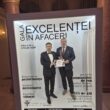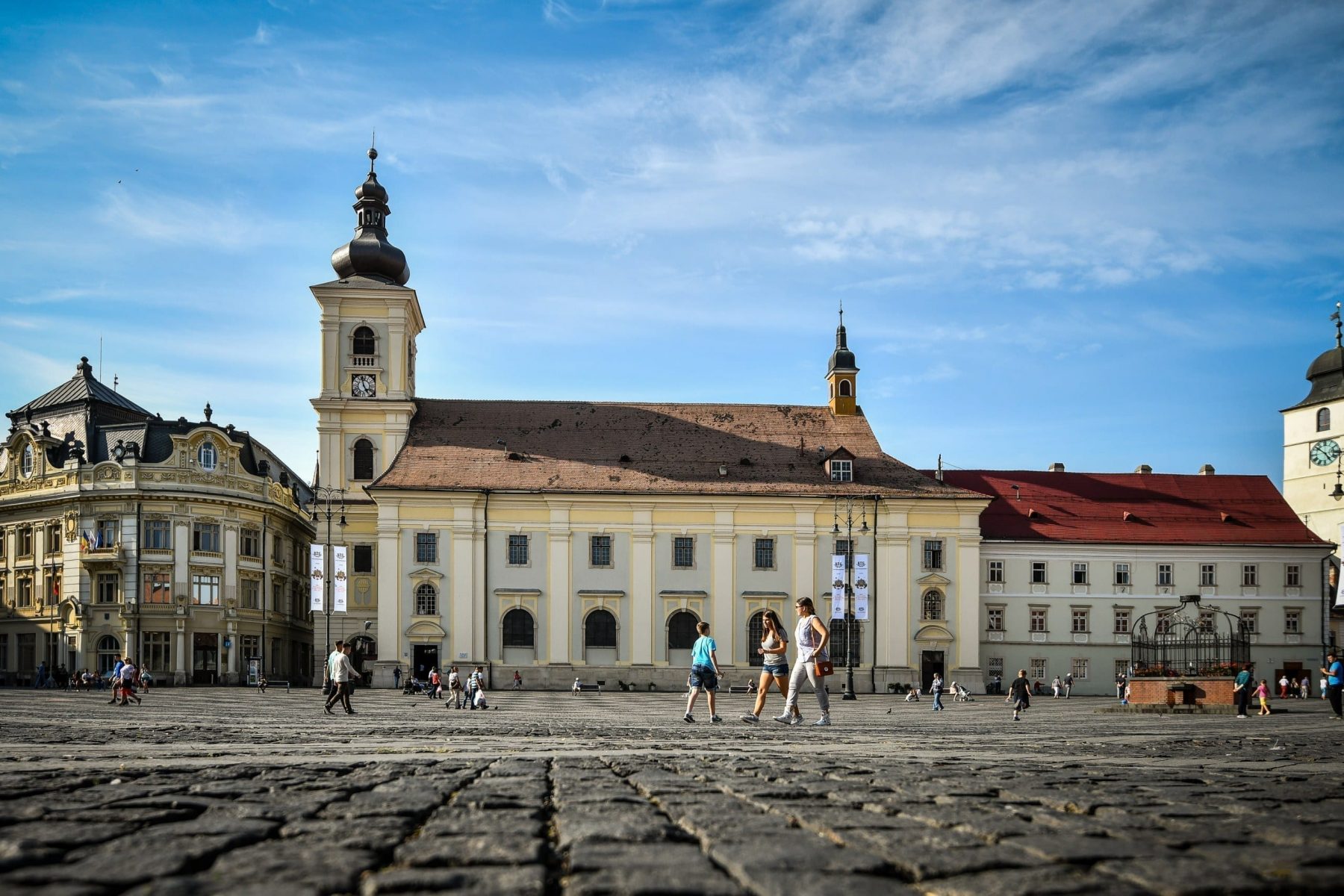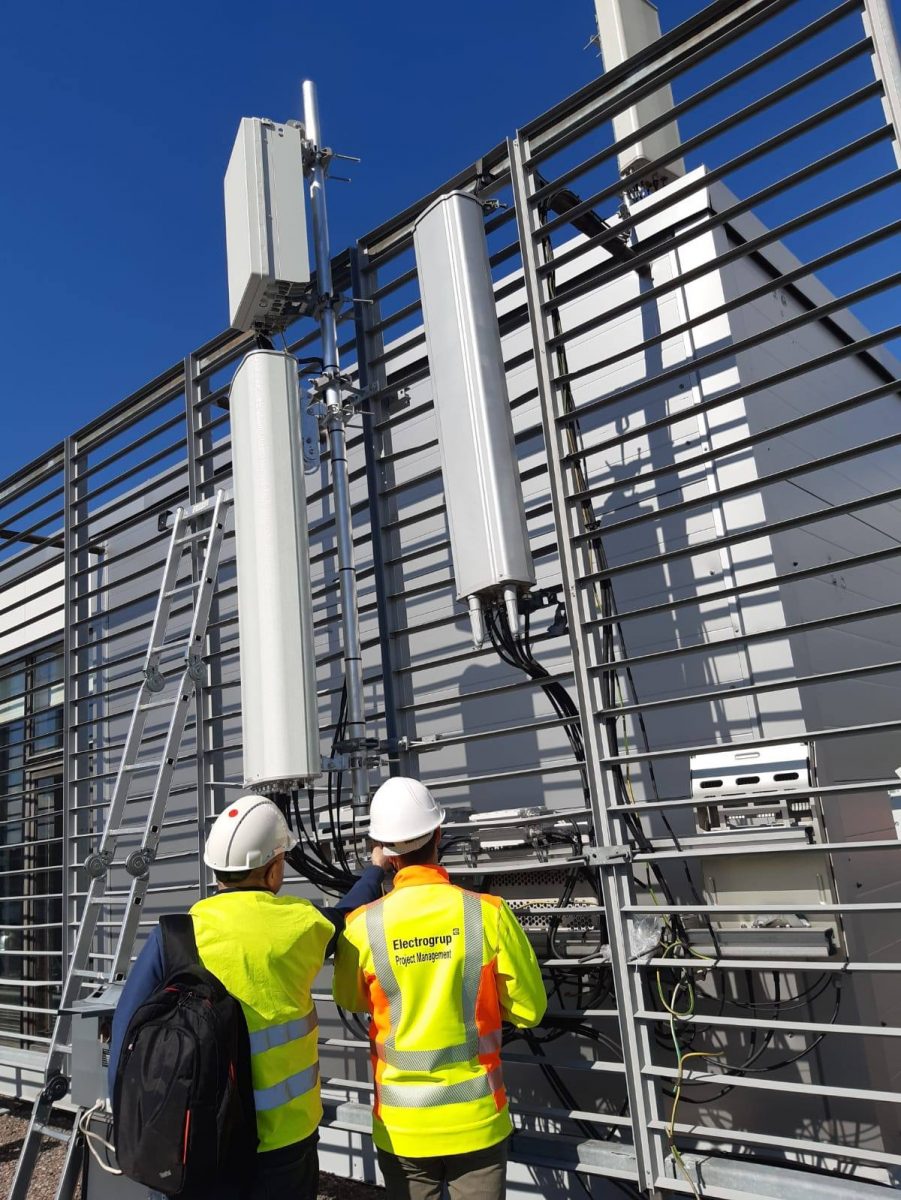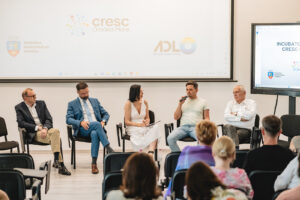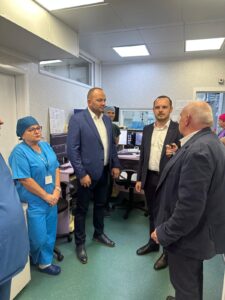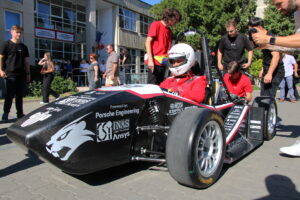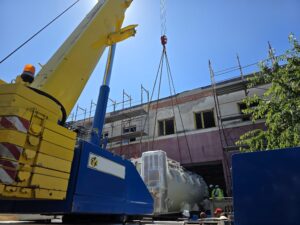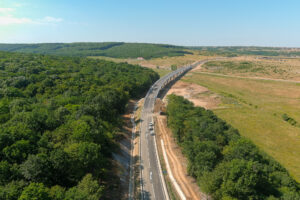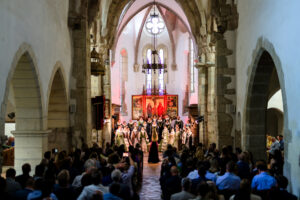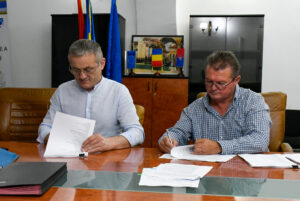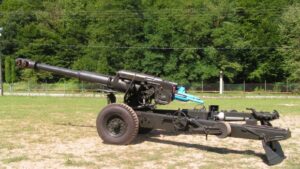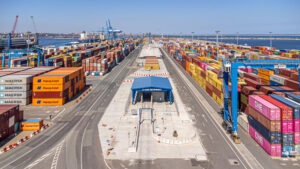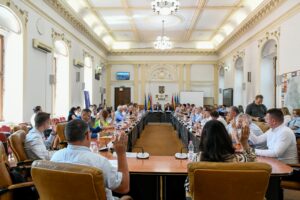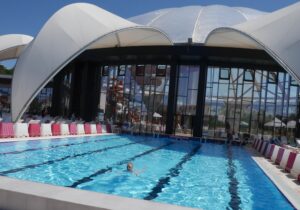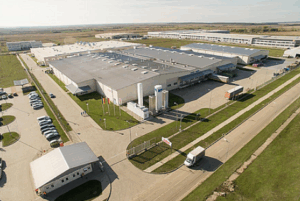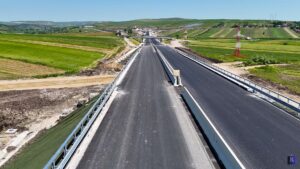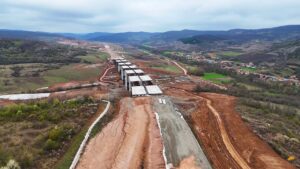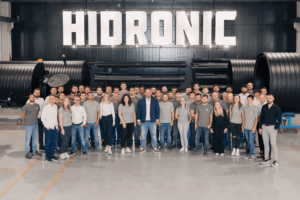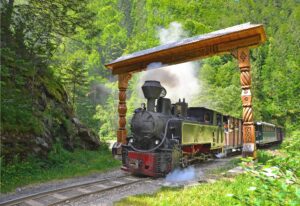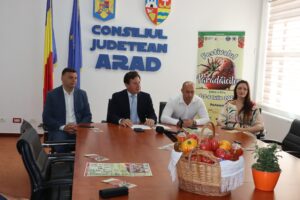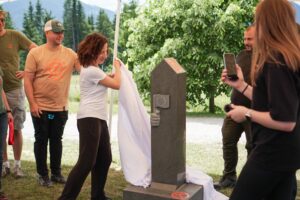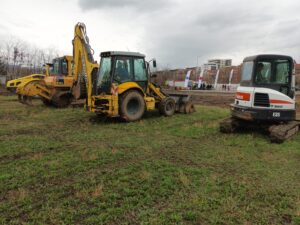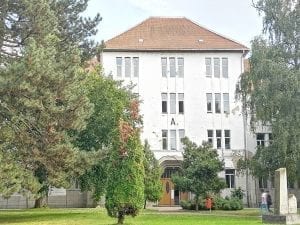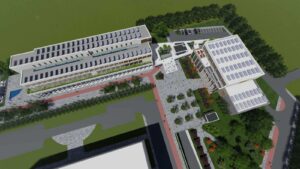A medieval city bearing witness to and displaying, in its architecture, a rich 900-year-old history, Sibiu offers tourists from all over the world a fascinating show of history, culture and tradition, infused with the exuberance of modernity and the vitality of new generations. It is the only city in Romania to have three Michelin stars and has entered the competition for European Best Destination 2020.
(From the special edition of TB 86 – „ENJOY TRANSYLVANIA!” – May/June 2019)
Sibiu, Hermannstadt in German, is fascinating first of all because of its history. It is virtually impossible to be in the city and not find out about its past. Its ramparts, its squares, its historic monuments and paved streets are the expression of an almost 900-year-old tumultuous existence. You should know that its first documentary mention dates from 1292, then a Saxon colony with a spectacular evolution across centuries. You should also know you are in the former capital of Transylvania, from the 16th century on. The first school, the first library, the first hospital, the first apothecary, the first Romanian book on medicine, the first theatre, the first cast iron bridge – these were all in Sibiu, and the list goes on. And there’s more besides the history of this city; every year, Sibiu hosts a number of international cultural events – and was, in 2007, the first east-European city ever to hold the title of European Capital of Culture. So now that you know a bit about its origins, let’s find out some of the most important tourist attractions of Sibiu, a city to discover.
The Large Square and The Small Square
The Large Square is where most important events have taken place in Sibiu’s history. It is approximately 140 metres long, 90 metres wide and dates back to 1366, when the third fortification ring of the city was completed. Nowadays, it is from the Large Square that you might hear the sounds of guitar strings and live concerts, it is here that political statements are made from and it is also a stage for major characters in theatre, music and dance festivals. It is the favourite place for tourists looking for relaxation at the fancy outdoor cafes – but also an excellent meeting point for locals.
The Small Square dates back to 1582 and is situated along the city’s second fortification ring. It is distinctly divided by Ocnei Street, which descends underneath the Bridge of Lies – another unmissable gem – towards the Lower City. With only small changes, the square keeps its 15th and 16th century aspect, all its buildings historical monuments, with distinctive fortification elements, public edifices or private homes. Buildings are tall and have those ellipse-shaped, odd roof skylights known as the ‘Sibiu eyes’. In 2019, the Sibiu local authorities completed the renovation of an iconic building at No. 22. The Small Square is enjoyed by tourists seeking a bit of quiet and rest on its benches – and is also preferred for its view of the Council Tower (RO: Turnul Sfatului), the Bridge of Lies and the fascinating towers of the Evangelical Church. The Huet (Called so after Albert Huet, 1537-1607, important local Saxon leader) Square is just a stone’s throw away – and you should definitely check out the Fellow’s House (In medieval guilds, crafters would be apprentices first, then fellows, upon improving their skills, and only the very best would get their peers’ approval to be considered masters) there, as well as the impressive Stairs’ Passage, a massive brickwork connecting the Lower City to the Upper City.
The Ramparts and The Guard Towers
The fortification of Sibiu began at the end of the 12th century. The first fortified precinct was built around the present day Huet Square. Due to the rapid expansion of the city and the growing danger of Ottoman attacks, the second, third and fourth precincts were built, enclosing the lower and upper city. These precincts would later be consolidated by adding bastions and thus turning Sibiu into one of the strongest medieval cities in this part of Europe.
The Council Tower
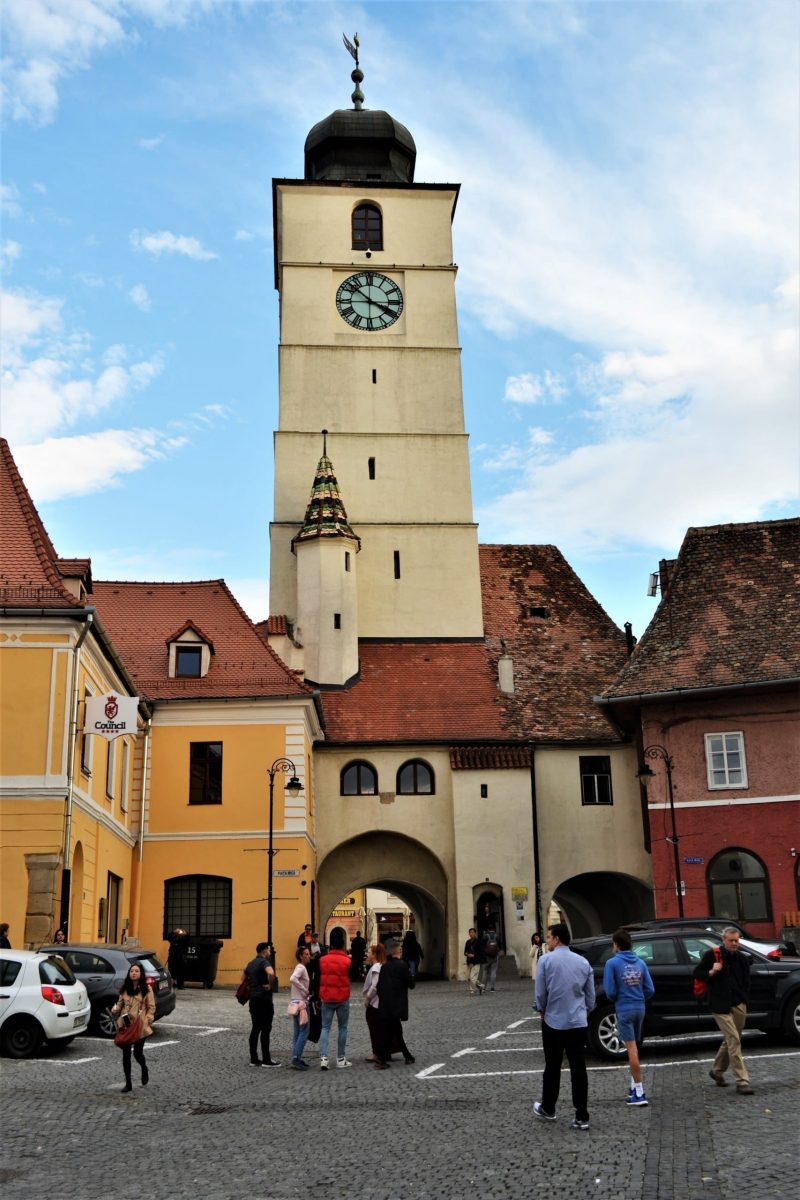
The Council Tower sits between Sibiu’s two major squares – the Large Square and the Small Square – and it has always been an iconic symbol of the city. Its name comes from the function it was designed for – to protect the entrance of the second precinct, where the Sibiu City Hall was, first mentioned in documents in 1324. The tower was probable built at the same time with the second precinct itself, between 1224 and 1241. In its actual layout, it is seven stories high, each one retracted, with embrasures (The opening in a wall, crenellation or battlement between the two raised solid portions. The purpose of embrasures is to allow weapons to be fired out from the fortification while the firer remains under cover) on its sides. The intrepid can visit all the levels all the tower; from up there, there is a magnificent view of the red roofs of Sibiu, on the backdrop of the Carpathian mountaintops. One of the famous visitors of the Council Tower was, in 1998, Britain’s Prince Charles.
The Bridge of Lies
The Bridge of Lies is one of the best-known symbols of the city. Built in 1859 to replace a wooden passage, the Bridge of Lies is the first cast iron bridge in Romania. There are many legends explaining its name and it is the favourite place of all tourists.
The Brukenthal Museum
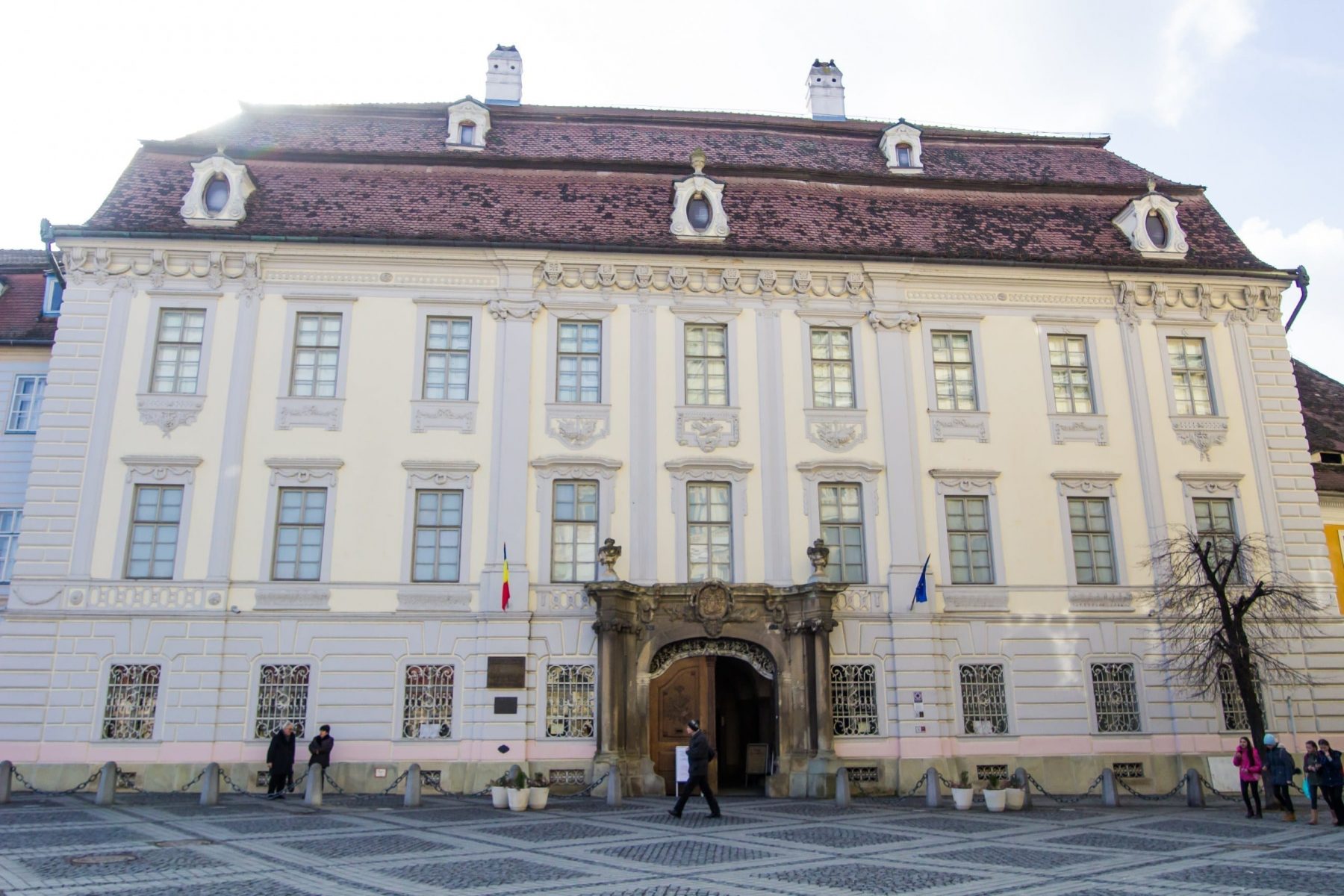
The Brukenthal National Museum is the pride of Sibiu but also of the entire country, because it is the first museum in Romania and Central Europe, inaugurated in 1817. It owes its existence to one of the most important Transylvanian personalities, baron Samuel von Brukenthal, governor of the principality of Transylvania in the second half of the 18th century. He held this position between 1777 and 1787 and built, in Sibiu, a late baroque palace, after those in Vienna. The Brukenthal Palace and the baron’s collections are the core of today’s museum, its gates open to the public from the very beginning, by testament of its founder.
Today, the museum is organised into several galleries: European Art, Romanian Art and Contemporary Art. They display a rich, varied heritage of painting, sculpture, stamps and cartography. Jan van Eyck, Antonello da Messina, Hans Memling, Lorenzo Lotto, Pieter Bruegel, Franz Neuhauser, Theodor Aman, Nicolae Grigorescu, Ştefan Luchian, Nicolae Tonitza, Corneliu Baba are just a few of the many famous authors whose works are on display. Besides its rich collections, the baroque palace impresses with its well-preserved architecture, its detailed exterior and interior – with pieces of furniture more than two centuries old. Also impressive is baron von Brukenthal’s book collection, a typical example of encyclopaedic, Illuminist library which, in line with the standards of its time, covered all six branches of human knowledge: theology, law, sciences, arts, history and literature.
The Brukenthal library shelves hold manuscripts, incunabula, fine leather-bound folios, the famous Great French Encyclopaedia, the works of famous authors of antiquity such as Herodotus, Thucydides, Plato, Aristoteles, Cicero, Plutarch, as well as modern ones such as Locke, Leibniz, Voltaire, Buffon, Hume, Rousseau. With almost 16,000 volumes, the library in the Brukenthal Palace was one of Transylvania’s most important ones in the 18th century.
The ‘Holy Trinity’ Orthodox Cathedral
The ‘Holy Trinity’ Orthodox Cathedral was built between 1902 and 1906 by Budapest architects Virgil Nagy and Iosif Kamner. It has the elements of Byzantine basilicas, is a scaled copy of the St Sophia in Istanbul and its towers rise to 45 metres high.
The ‘Holy Trinity’ Roman-Catholic Church
The ‘Holy Trinity’ Roman-Catholic parish church was built by Jesuit monks between 1726 and 1733 and is inspired by the early Viennese baroque style. It was consecrated on 13 September 1733 by bishop of Transylvania, Gregor von Sorger. The domed-tower in front of the nave was completed in 1738, has four stories and is 47 metres high. It has a clock with two discs and three massive bells, installed in the 19th century. If you pass through the Large Square, be sure not to miss this architectural gem – especially since it is open daily.
The Evangelical Church
The Evangelical Church is one of the most impressive Gothic structures in Transylvania. It was built in the 14th century on the site of an old 12th century church. The church is dominated by the seven-storied tower decorated with four smaller towers, in its corners. If you climb the 192 steps, you can reach the top floor and enjoy the city panorama. The observation platform is situated at a height of 55 metres. The church tower is 73.34 metres high – the tallest building in Sibiu.
From 1496 onwards, for 300 years, the church has been the final resting place of mayors, local leaders and personalities of Sibiu. In 1796 burials were forbidden inside the church – but there would be an exception in 1803, when the body of Baron von Brukenthal would be laid in a crypt near the pulpit. Later, the funeral stones were removed from the nave in 1833 and inserted in the ferrule walls – thus creating a unique 67-piece gallery, the only such one in Romania.
Thalia Hall
Thalia Hall hosts the Sibiu Philharmonic and is an edifice of national importance. It was built in 1787 by Martin Hochmeister, the founder of the first bookstore in the country, and is a true architectural gem, with two balconies and a lodge for the governor of Transylvania. The building’s main destination wasn’t today’s, a concert hall – it was initially a theatre. In June 1788 the first play was staged here, confirming it as the first theatre in the country and one of the most beautiful in Europe. The building was badly damaged by fires in 1826 and 1949. Its present restoration took 14 years.
The Eyes of Sibiu
Tourists coming to Sibiu are fascinated by the small ellipse-shaped roof skylights that look like eyes. In the beginning, their role was purely practical – to ventilate the attics. In time though, they became a true symbol of the city – ‘the wide eyes keeping watch for the locals’.

The ASTRA National Museum Complex
The Astra Open Air Museum is fascinating both in its uniqueness and its size – over 96 hectares, of which the actual exhibition covers 42 hectares. It is a must for any tourist. The Astra story begins well over a century ago, when Romanians in Transylvania made one of their dreams come true: to show, in Sibiu, a collection of the most emblematic elements of Romanian identity, under the patronage of the Association for Romanian Literature and the Culture of Romanian People (ASTRA). The first exhibition was organised by this association in 1905. The ASTRA Museum is 4 kilometres outside the city, in the ‘Dumbrava Sibiului’ natural reservation, recommended for tourists all over the world and awarded with three stars in the print version of the 2019 Michelin Guide.
There are 10 kilometres of parkways and alleys here passing by peasant households, workshops, wooden churches, Christian folk shrines, sheepfolds, wine cellars, water and windmills. The original interiors show the simple life of Romanian peasants from all over the country, their activities and traditions.
There are many amenities for tourists: two restaurants, two guest houses, a children’s playground, an information point, four parking areas, many picnic spots, a number of practical demonstration areas and many other leisure activities for a pleasant stay. In summer there are numerous events taking place here.
Visit the villages around Sibiu
Mărginimea Sibiului (literally, the Sibiu Surroundings) is a unique ethnographic area in Romania, west from Sibiu. It encompasses 18 villages situated at the foot of mountains Cindrel and Lotru. Locals are still devoted to their traditions and among their main activities are crafting, agriculture, farming and especially sheep-herding. It is an amazing area due to its stunning views and pristine nature.
Moreover, tourists enjoy the hospitality of the locals, always glad to share their cheese and meat delicacies specific to this region. In the Mărginime, every year there are festivals attracting thousands of tourists eager to discover traditional products. And as a last argument, we’ll tell you that in December last year, the Mărginime was ranked by europeanbestdestinations.com among the top European destinations for… ‘digital detox’.
Accommodation in Sibiu
Sibiu welcomes everyone. From four and five-star hotels to guesthouses and hostels, accommodation in Sibiu fits all budgets. There are more than 5,500 places in very convenient hostels, in more than 70 neat guesthouses or the 25 two, three, four or five-star hotels. The accommodation possibilities of Sibiu are completed by guesthouses from nearby towns and villages – and add up to 9,000 places. Due to international and European-level events, Sibiu had to develop its accommodation options in order to stay attractive. As a result, hotel services and amenities make for a pleasant destination, confirmed by the fact that Sibiu is the only city in Romania awarded with three Michelin stars. There is always some special offer for city breaks – for Easter, Christmas or cultural and sports events taking place in the city.
Sibiu must-see events this year
16-19 May: Sibiu hosts major cultural events every year. The Sibiu Jazz Festival 2019 starts on 16 May – it is one of the most important such events in Romania, given its longevity, continuity and impressive number of celebrities honouring its invitations. It is the oldest such festival in Romania and one of the oldest in the world.
14-23 June: The Sibiu International Theatre Festival (FITS) is one of Sibiu’s most spectacular events, turning the entire city into a stage – with characters, music and colour. The 26th edition takes place this year, between 14 and 23 June. This city-wide celebration of performance arts encompasses, in its ten days, 540 events – including plays and street performances, involving over 3,300 artists and guests from 73 countries. The Performance Arts Market takes place each year and is a chance for all artists, cultural entities, performance institutions or cultural networks to meet important producers from all around the world. Over 70,000 spectators are expected this year.
26-27 July: don’t miss the ARTmania Festival, the first Romanian festival to promote the mix between art and entertainment, a platform encouraging all forms of artistic expression inspired by rock culture. The longest-running rock festival in Romania, ARTmania is recognised as a main regional promoter of contemporary musical projects. A number of important bands and artists have played on its stage, from Steven Wilson to Die Toten Hosen, Nightwish, Within Temptation, HIM, Tarja Turunen, The Gathering, The Sisters of Mercy, Lacuna Coil, Helloween, Lacrimosa, Poets of the Fall and many others.
14-20 October: the 26th edition of The Astra Film Festival, one of the most relevant documentary filmmaking events in Europe, which offers every year in Sibiu a vital and exciting meeting place of world cinema.
The Festival introduces the latest international documentary film productions and trends, promotes worldwide cross-cultural understanding, showcases the best interactive non-fiction storytelling, explores how the digital revolution is reshaping documentary art, and celebrates the work of genre’s great masters. Over the years, the festival has highlighted the work and presence of John Marshall, Frederick Wiseman, David MacDougall, Michael Yorke, and Sergei Loznitsa, to name just a few. The Astra Film Festival was founded in 1993 as a ground-breaking project in the region, and its history is itself a fascinating documentary.
13-31 December: the most beloved winter event of Sibiu, the Christmas Fair, attended by thousands of tourists every year. It is well-known both in Romania and abroad for its size, atmosphere and traditions and has often been compared to the similar event held in Vienna. The inauguration of the project ‘Christmas in Sibiu – Gastronomy. Culture. Tourism 2019’ will see a show of light and sound, a flurry of instruments from the traditional pan flute to the more modern double bass, trumpet, violin, guitar, percussion instruments, keyboards representing all kinds of music from classical to pop-rock, from jazz to authentic folklore.
Sibiu county in numbers
Over 560,000 tourists have visited the county last year. 400,000 of them came to the city of Sibiu, twice the number recorded a decade ago. The most popular month was august, with 80,500 tourists. Hotels are the preferred accommodation – but guesthouses and farm guesthouses are increasingly popular. Atypically, there are two full seasons in Sibiu – the second one in winter, around the Christmas Market and the New Year’s Eve, and therefore December sees peak levels in tourism.
Sibiu City App
Tourists can download the free Sibiu City App, which provides a list of local attractions, recommendations or interesting events, an updated agenda, useful information on accommodation, restaurants, leisure activities, transportation. The app is available in three languages – Romanian, English and German.
Main photo: Focus Sibiu
